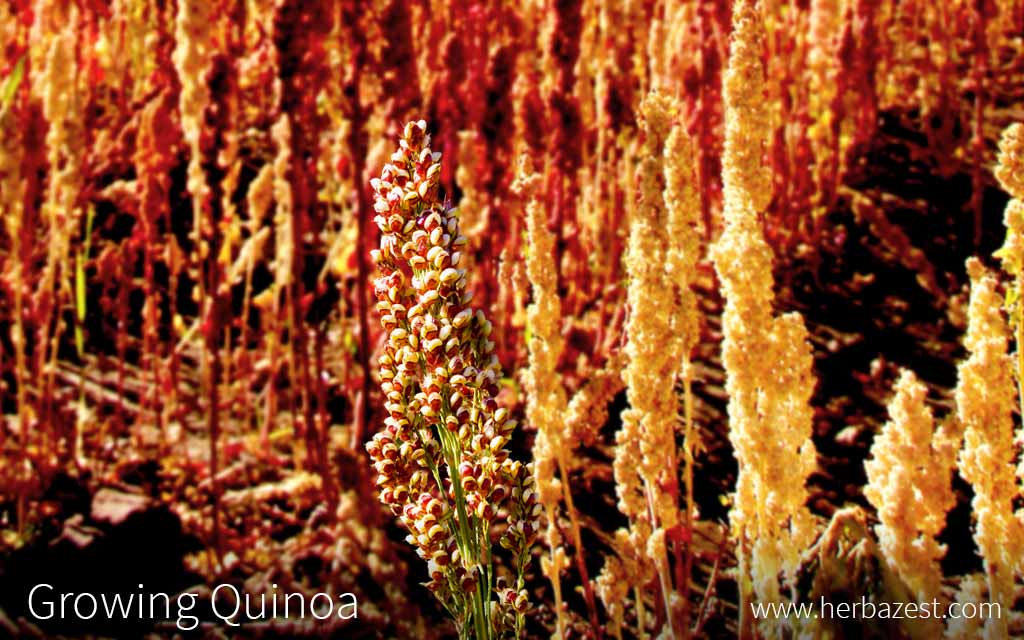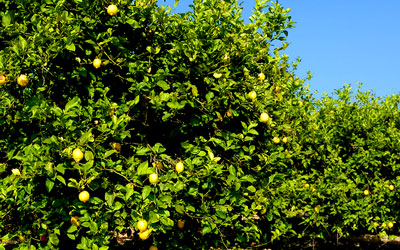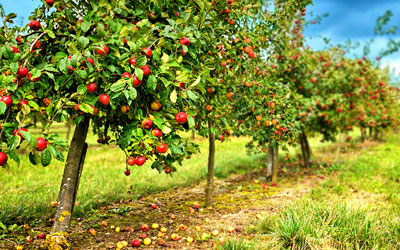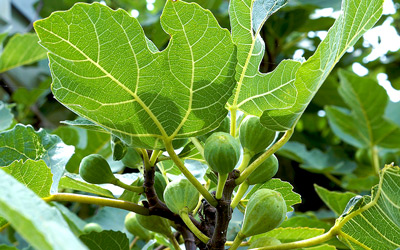Sometimes called a "pseudo-cereal" and often confused with grains, quinoa is a high altitude Andean seed, a very hardy crop that requires specific soil and weather conditions to thrive. After a period of trial and error, different varieties of quinoa have been grown in North America and Europe. However, outside of its native areas quinoa is more susceptible to pests and diseases. The following growing guidelines offer detailed information about the special care and attention quinoa requires for an optimal development.
1. Preparing the Soil
Quinoa grows well on sandy-loam to loamy-sand soils. In South America, quinoa is grown in soils that are low in nutrients and may have poor or excessive drainage, very acidic to alkaline, with a pH range of 4.8 - 8.5. To plant quinoa, it is necessary to prepare a well-drained seedbed. Quinoa prefers cool soil conditions, with temperatures in the range of 45 - 50°F (7 - 10°C).
2. Planting
Planting Quinoa Outdoors
Seeds should be planted at a depth of half to one inch (1.0 - 2.5 cm). Two or three seeds at a time are put into rows spaced 24 - 32 inches (60 - 80 cm) apart. Because of their small size, seeds are susceptible to both dehydration and waterlogging when sown too shallow or too deep.
Quinoa germinates readily, within 24 hours after planting when adequate moisture is present, and the first seedlings appear within three to five days. If the temperature conditions are not cool enough, quinoa seeds may not germinate. In that case, a week of refrigeration may allow proper development.
3. Plant Care
Watering
Quinoa is a hardy, drought-tolerant crop with a combined precipitation and irrigation requirement of 10 - 15 inches (25 - 38 cm) per year. Lower amounts of water have been shown to reduce plant height as much as 50%, with an 18% reduction in yield. However, in ideal weather conditions, with proper cold and dry conditions, the quinoa sown during late April to mid-May won't need watering until mid-June.
Plants should not be irrigated until they show two or three leaves. On the other hand, over-watering quinoa during the seedling stages can cause damping off and severe stunting, and excessive irrigation after quinoa is established usually translates into tall, leggy plants with low yield.
Fertilizing
In the Andean region, quinoa is generally cultivated in rotation with potato or cereals, without the use of fertilizers or manures. In different latitudes, and depending on soil fertility, this hardy crop responds well to nitrogen fertilizer, but yields decline when greater levels of available nitrogen are present.
Weed Control
Because it grows in hardy conditions, quinoa is not greatly affected by weeds, but the cultivation process includes some weeding, which is done once or twice. When the quinoa plant reaches 8 - 10 inches (20 - 25 cm) tall, the first weeding takes place, along with thinning if the seedlings are clustered together or need to be moved to spaces with greater water availability.
4. Pest & Disease Control
In the Andean regions where quinoa has been cultivated for millennia, there is not a need for intensive pest and disease control, except for some light ridging (piling up the soil around the base of the plants) to protect the crop from possible pests and diseases, as well as to prevent collapse from the weight of the panicles.
However, when quinoa is grown in new production areas, under different weather and soil conditions, disease and pest problems may arise. Viruses found on spinach and beets have been observed in quinoa fields. Many of these viruses are transmitted by aphids or leafhoppers. Several of the viruses tested produce symptoms, yet research needs to be conducted to determine if any cause significant damage.
Insect pests observed in North America include a wide variety of caterpillars. Flea beetles and aphids can also cause damage in quinoa, as well as the sugarbeet root aphid (Pemphigus populivenae). Since this crop requires little water, the cracks in the soil allow aphids access to the roots. The "quinoa plant bug" (Melanotrichus spp.) and the beet armyworm (Spodoptera exigua) have also reduced yields in some research fields.
Diseases such as damping off (Sclerotium rolfsii), downy mildew (Peronospora farinosa), stalk rot (Phoma exigua var. foveata), leaf spot (Ascochyta hyalospora), gray mold (Botrytis cinerea), and bacterial blight (Pseudomonas spp.) have caused significant losses in South America, North America, and Great Britain.
Since there are no pesticides approved for use on quinoa, the best control method consists of irrigating the fields when winged aphids appear in leaf-petiole galls of cottonwoods and poplars in early summer. Bacillus thuringiensis, a naturally-occurring bacterium, can be used to control defoliating caterpillars.
The seeds in the quinoa panicle can also be subject of bird predation. Although quinoa's pericarp produces bitter saponins - a naturally-evolved chemical defense against insects and animals - they are easily washed out by rain and may not totally prevent feeding losses.
5. Harvest
Harvesting takes place before the plant is fully mature, when its lower leaves start showing signs of yellowing, as well as some splitting at the base and dry seeds. It consists of cutting the plants eight inches (20 cm) from the soil with sickles and forming small sheaves, which are left to dry above the rows. Rain during harvest will cause problems, since mature seed will germinate within 24 hours after exposure to moisture.
After being harvested, the quinoa plants are laid for 30 - 45 days, after which they are beaten with sticks on sheets spread over the ground or on well-trodden earth to remove their seeds, and then silted or winnowed to separate the grain from the chaff. Using this technique, farmers can obtain 1,100 - 3,300 pounds (500 - 1,500 kg) per 2.5 acres (1 ha).
6. Storage
The quinoa seeds must be dry before and during storage. Before using quinoa in food processing, the saponins in the pericarp are removed by soaking them in water or by mechanical methods, such as with a rice polisher or a machine similar to those used to remove wheat bran. Under proper conditions, in a dry, cold-storage room, away from bugs, quinoa seeds have a near indefinite shelf life.






